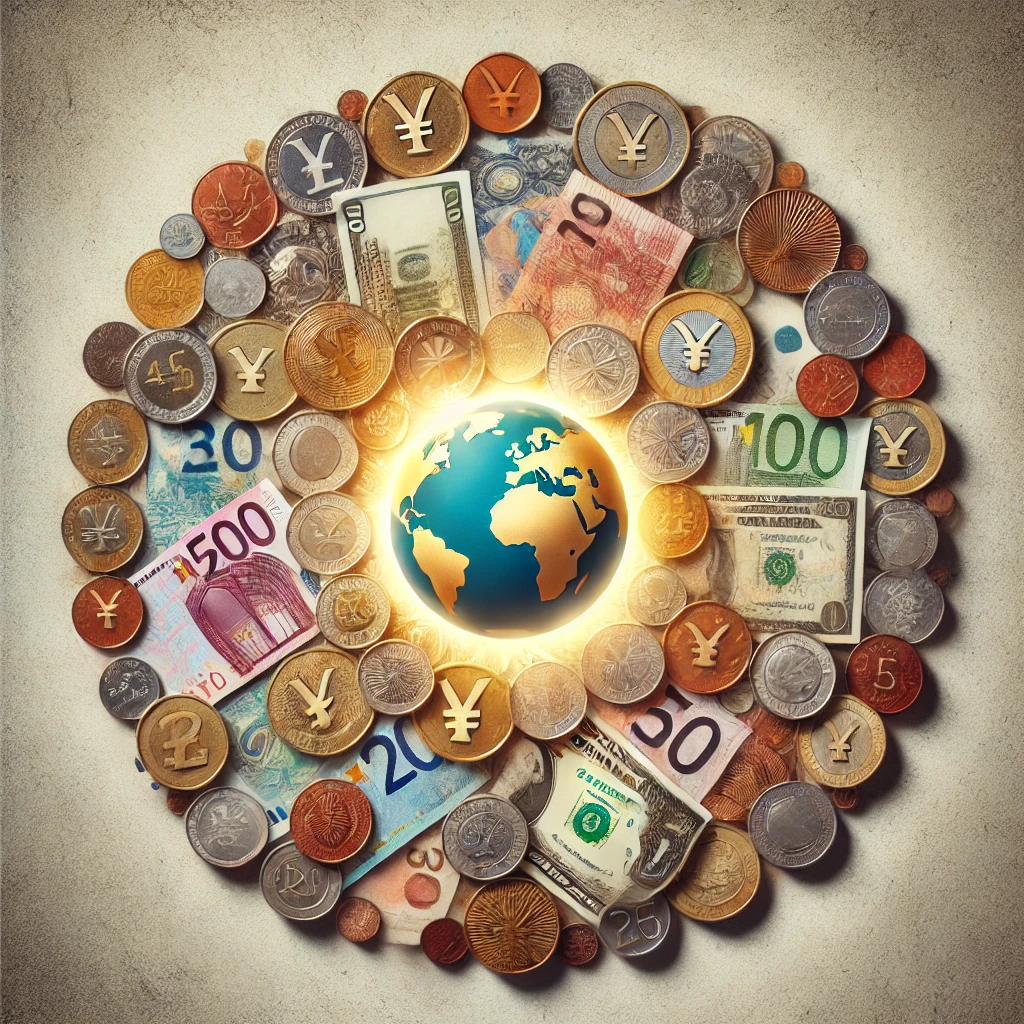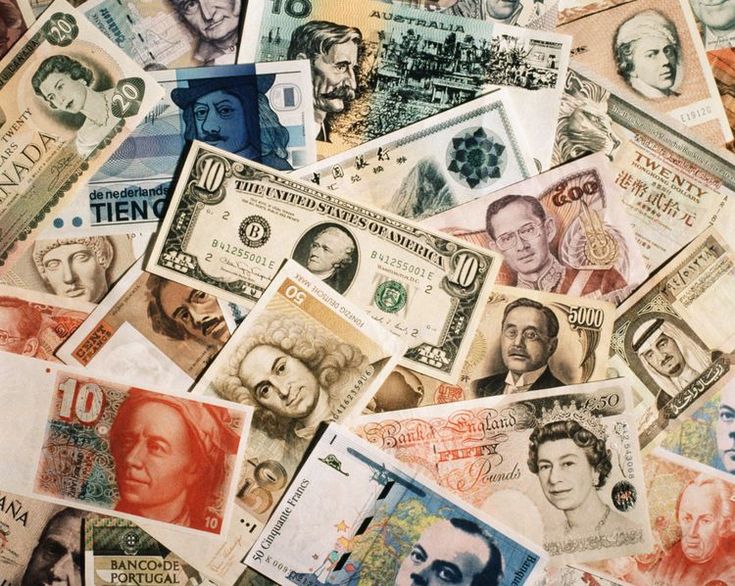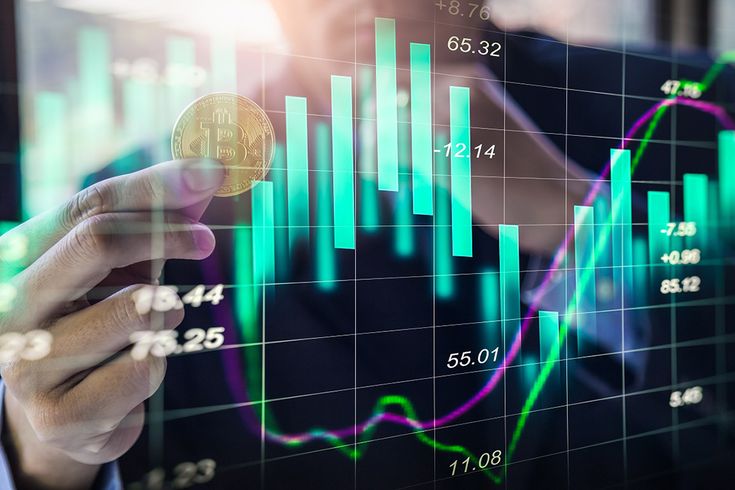A deep dive into the world of currency past, present, and future
Within the complex structure of economics, currency assumes a central position, serving as a crucial intermediary for transactions, a reliable repository of value, and a standardised measure for quantifying economic activity. It is any widely recognised item or verifiable record that serves as an accepted form of payment for goods, services, and the repayment of debts. This article explores the development, various forms, significant functions, and present-day currency applications. It aims to shed light on the historical and ongoing importance of currency in shaping societies and economies.

Definition of currency
Currency acts as a standard for trading goods and services, providing a convenient method for individuals and businesses to conduct transactions. It eliminates the inefficiencies of barter systems by offering a standardised measure of value, simplifying trade, and facilitating economic growth.
Historical evolution of currency
Currency has undergone significant transformations, from barter systems to modern digital currencies. The barter system was initially prevalent, where goods and services were directly exchanged. However, its inefficiencies led to the introduction of commodity money, such as gold and silver, which had intrinsic value. Over time, fiat money emerged, backed not by physical commodities but by the trust in the issuing government. Today, digital currencies represent the latest evolution, leveraging technology to create decentralized and secure exchanges.
Understanding currency
Currency has been a cornerstone of human civilization, facilitating trade and economic interaction for thousands of years. Initially, currency took the form of metal coins made from precious metals like gold, silver, and bronze, which held intrinsic value.
However, as societies evolved, so did the concept of currency, gradually shifting toward a standardized medium of exchange that, in itself, held no intrinsic worth. This shift enabled more flexible and efficient trade across regions and continents.
A significant turning point in currency history is the adoption of paper currency. Originating as early as 1000 B.C.E. in China, paper currency represented a revolutionary idea: exchanging a piece of paper for goods or services of real value.
Though initially met with skepticism, the concept eventually gained widespread acceptance, leading to modern currency systems that we rely on today. Presently, most countries issue currency in paper form across various denominations, with fractional values represented by coins. This evolution of currency into easily transferable and widely accepted forms has been fundamental in shaping today’s global economy.

Currency trading
Currency trading revolves around the exchange rate, which indicates the current value of one currency in terms of another. These rates are expressed as currency pairs, like EUR/USD (euro to U.S. dollar), and constantly fluctuate due to economic and political factors. These fluctuations are what drive the currency trading market, one of the world’s largest by volume.
The foreign exchange market operates entirely online, with trades occurring 24/7 to serve traders across all time zones. Transactions are generally substantial, with a standard lot size of 100,000 units. Most traders in this market are professionals managing investments for institutions like banks and large corporations.
For the general public, currency exchange often happens at airport kiosks or banks before traveling. However, consumer advocates recommend exchanging currency at a bank or in-network ATM to secure the best rates and avoid high fees often charged by other options.
Types of currency
Commodity currency
Commodity currencies are backed by physical goods, such as gold or silver, with intrinsic value. Historically, these currencies provided stability because their value was directly linked to tangible assets. The gold standard, for instance, ensured that currency value was tied to a specific amount of gold, providing a reliable measure of worth.
Fiat currency
Fiat currency is government-issued money that is not backed by a physical commodity. Its value derives from the users’ trust and acceptance and the stability of the issuing government. The most common form of currency today is fiat money, which includes the US dollar, euro, and British pound. Central banks regulate its supply to control inflation and ensure economic stability.
Digital currency
In finance, digital currencies, encompassing cryptocurrencies like bitcoin, operate exclusively in the digital domain. These currencies harness cryptographic technologies to safeguard transactions and govern the issuance of new units, offering an alternative to conventional banking systems. Their decentralized nature has the potential to reduce transaction costs and boost privacy. However, regulatory complexities and concerns arise due to inherent volatility and security risks.
Currency convertibility
Currency convertibility varies worldwide and refers to the ability to exchange a local currency for another in the foreign exchange market, with varying levels of central bank or government involvement. Based on how freely this exchange occurs, currencies fall into three main categories:

Fully convertible
Fully convertible currencies have no restrictions on the amount that can be traded internationally, and governments do not artificially control exchange rates. This level of convertibility allows the currency to respond purely to market forces, as seen with the U.S. dollar, a primary fully convertible currency.
Partially convertible
In partially convertible systems, central banks control certain cross-border investments, limiting currency exchanges related to international investments. Although domestic transactions occur freely, significant restrictions apply to international exchanges, often requiring special approvals. The Indian rupee and the Chinese renminbi exemplify partially convertible currencies.
Nonconvertible (or blocked)
Nonconvertible currencies are restricted from exchange on the international market, meaning individuals and companies cannot freely convert them. Governments typically do not engage these currencies in international markets, as seen with the North Korean won and the Cuban peso.
Role of currency in the economy
Basics of currency exchange
Currency exchange, a pivotal element in international trade and finance, entails converting one currency to another. Currency exchange rates vary due to the interplay of supply and demand forces shaped by different economic factors. Understanding these basics helps one grasp how global trade operates and how currencies are valued in the international market.
Factors affecting currency value
Several factors influence currency value, including interest rates, inflation, political stability, and economic performance. For instance, higher interest rates often attract foreign investment, increasing demand for a country’s currency and boosting its value. Conversely, high inflation can erode currency value by reducing its purchasing power.
Central banks and monetary policy
Central banks significantly influence the value of a currency via monetary policy tools like interest rates and reserve requirements. Their actions impact inflation, employment, and overall economic growth. By adjusting interest rates, central banks can influence economic activity, either encouraging spending and investment or curbing inflation.
Inflation and currency value
Central banks diligently observe inflation because it reflects the pace at which the prices of goods and services increase, resulting in a diminished purchasing power of money over time. Central banks implement monetary policies to maintain price stability and prevent an overheating economy, such as adjusting interest rates. By increasing interest rates, central banks can slow economic activity and bring inflation under control.
Case studies and examples

Evolution of the British pound
The British pound, a venerable currency with a long history, offers a compelling subject for analysis and study. Its evolution reflects broader changes in the global financial system, transitioning from the gold standard to the current fiat system. Initially, the pound was backed by silver, then gold, and now relies on the credibility of the Bank of England and the economic stability of the UK.
The role of the Bank of England in currency management
The Bank of England uses various monetary policy tools to manage the British pound’s value and ensure economic stability. The bank aims to maintain low inflation, support economic growth, and provide financial stability by controlling interest rates and the money supply. Its actions significantly affect the UK’s economy and the pound’s value.
Regional currency examples: Scottish currency
Scotland uses the British pound, but Scottish banks issue notes that differ in design from those issued in England. This system dates back to the 17th century and highlights regional nuances in currency usage. While Scottish notes are equivalent in value to those issued by the Bank of England, they are sometimes viewed with scepticism outside Scotland, demonstrating the complexities of currency acceptance.
Differences between Scottish and British pounds
Although equivalent in value, Scottish notes often face scrutiny outside Scotland due to unfamiliarity. This scenario underscores the importance of regional acceptance and trust in currency systems. Travellers to Scotland should know these differences to avoid confusion and ensure smooth transactions.
Everyday use of currency in Scotland
Scottish notes are commonly used in daily transactions in Scotland, reflecting the country’s unique cultural and economic landscape. Understanding the regional currency practices can help travellers navigate local markets and engage effectively in the local economy.
Modern money and digital currency
Fundamental concepts of money

In the economic sphere, money assumes three indispensable roles: a medium of exchange, a store of value, and a unit of account. These functions are pivotal in promoting trade and fostering economic stability. Money streamlines transactions as a medium of exchange, eliminating the need for cumbersome barter systems. It serves as a standardised tool for facilitating the transfer of goods and services. As a store of value, money enables individuals to preserve their purchasing power over time, allowing for savings and deferred consumption. This function encourages prudent financial planning and long-term investments. Finally, as a unit of account, money provides a common denominator for comparing the value of different goods and services. This standardisation simplifies decision-making processes and enables efficient allocation of resources within an economy.
Money supply and economic stability
Central banks control the money supply, which is crucial for maintaining economic stability. An optimal money supply ensures sufficient liquidity without triggering inflation. Central banks employ a range of mechanisms, including open market operations and reserve requirements, to control the amount of money in circulation and maintain economic equilibrium.
Digital currencies and the future of money
Digital currencies are transforming the financial landscape, offering new ways to transact and store value. Cryptocurrencies like Bitcoin and Ethereum provide an alternative to traditional banking systems that are not controlled by a central authority. They promise lower transaction fees and enhanced privacy for users. Despite this, they also present challenges, including uncertainty in regulations, price volatility, and security vulnerabilities.
The role of financial institutions in money circulation
Banks and credit unions, which are financial institutions, play a crucial role in money flow. They provide services like deposits, loans, and currency exchange, ensuring the smooth flow of funds within the economy. These institutions also play a crucial role in implementing monetary policy and supporting economic stability.
Currency exchange services
Overview of currency exchange services
Currency exchange services facilitate the conversion of one currency into another, supporting international travel and trade. These services are provided by banks, currency exchange kiosks, and online platforms, offering convenience and competitive rates for individuals and businesses.
How currency exchange works
Currency exchange involves buying and selling currencies based on current exchange rates, which fluctuate due to market conditions. The value of currencies about one another, known as exchange rates, are influenced by supply and demand. Factors like interest rates, inflation, and significant geopolitical events shape these exchange rates. Grasping these elements enables individuals and enterprises to make knowledgeable choices regarding currency exchange.
Factors to consider when exchanging currency
When exchanging currency, consider factors like exchange rates, fees, and the reliability of the service provider. Comparing rates and fees from different providers can help you get the best value for your money. Choosing reputable providers is also important to ensure secure and transparent transactions.
Benefits of using currency exchange services
Currency exchange services offer convenience, competitive rates, and security for individuals and businesses engaging in international transactions. These services help travellers access local currency, support businesses in managing foreign exchange risk, and facilitate global trade by providing efficient and reliable currency conversion.
Currency accounts
Definition and purpose of a currency account
A currency account allows individuals and businesses to hold balances in foreign currencies, facilitating international transactions. These accounts are beneficial for companies that deal with multiple currencies, as they help manage foreign exchange risk and reduce conversion fees.
Types of currency accounts offered by banks
Banks offer various currency accounts, including multicurrency and foreign currency accounts. Multicurrency accounts allow you to hold multiple currencies in a single account, while foreign currency accounts are dedicated to a specific currency. Choosing the correct type of account depends on your needs and the currencies you frequently deal with.
Benefits of holding a currency account
Holding a currency account provides benefits like reduced currency conversion fees, protection against currency fluctuations, and simplified international transactions. These accounts can help businesses manage their cash flow more effectively and offer individuals a convenient way to hold and use foreign currencies.
How to open and manage a currency account
Opening a currency account involves choosing a bank, meeting its requirements, and managing it through deposits, withdrawals, and currency exchanges. It’s essential to compare different banks’ offerings and select one that meets your needs. Managing the account effectively involves monitoring exchange rates, minimising fees, and ensuring sufficient transaction balances.
FAQs
What is currency, and why is it important?
In a world of commerce and transactions, currency plays a pivotal role. It is an accepted payment medium, allowing for purchasing goods, services and the repayment of debts. In the realm of economic dealings, currency assumes a pivotal role. It functions as a medium of exchange, facilitating seamless transactions between parties. Furthermore, it serves as a store of value, allowing individuals and institutions to accumulate and preserve wealth over time. Additionally, currency acts as a unit of account, providing a familiar and standardized measure for pricing goods, services, and assets. These currency functions collectively contribute to the efficient and transparent economic exchanges.
How has currency evolved?
Currency has evolved from barter systems to commodity money (like gold and silver), fiat money, and most recurrences. Each phase addressed inefficiencies in the preceding system, making trade and economic activities more efficient.
What factors affect the value of currency?
Interest rates, inflation, political stability, and economic performance influence currency value. Several factors impact the supply and demand for currencies in the foreign exchange market.
How do central banks manage currency value?
Central banks wield monetary policy tools like interest rates, reserve requirements, and open market operations to regulate the value of a currency. These actions influence inflation, employment, and the overall expansion of an economy.
What are the advantages of using digital currencies?
Digital currencies offer benefits like lower transaction costs, enhanced privacy, and decentralization. However, they also pose regulatory uncertainty, volatility, and security risks.


